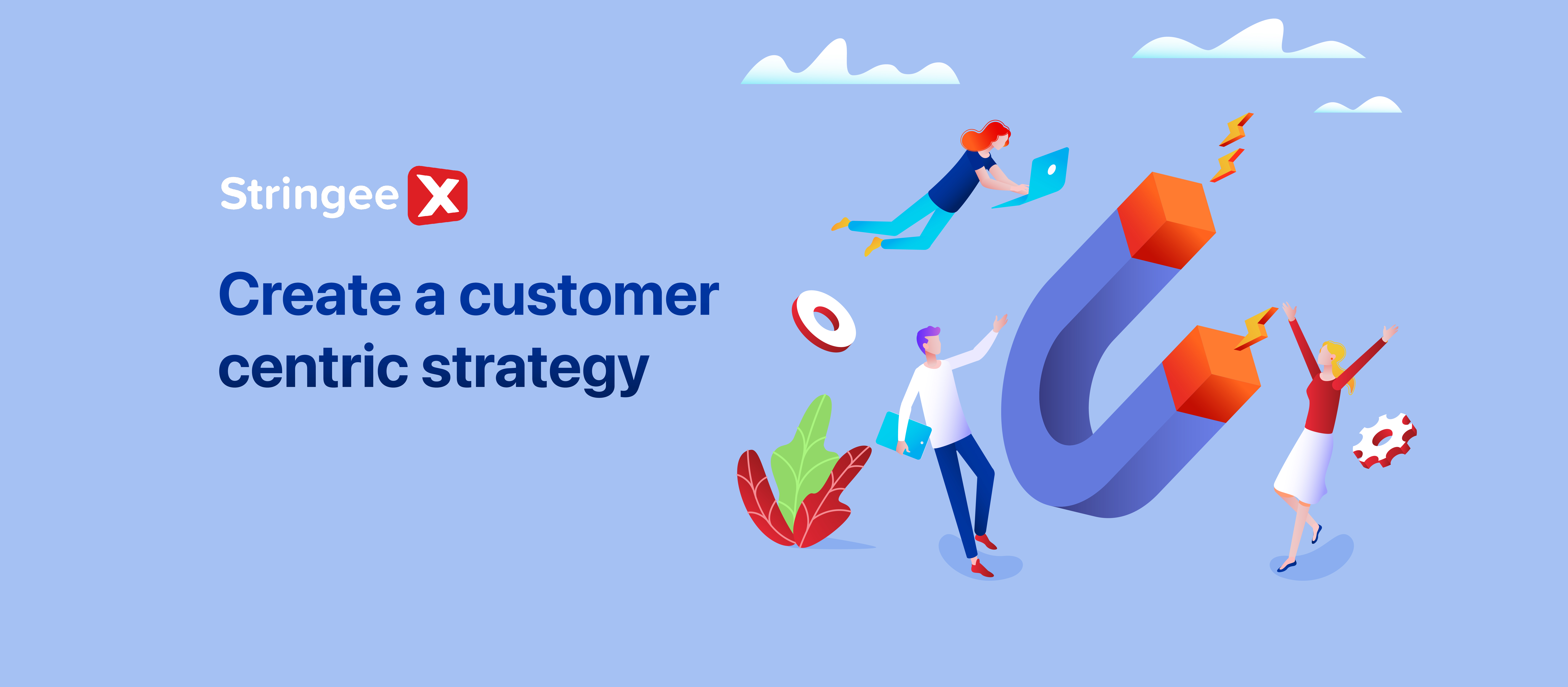Intro
The customer base is the bloodline of businesses, so all development strategies should revolve around customers. The top priority is to improve their satisfaction at any touchpoints. That’s why companies should create a customer-centric strategy to ensure a consistently positive customer experience. Scroll down for 8 effective methods!
Advantages & Challenges Of Customer-Centric Strategies
Customer-centric strategies have both pros and cons. Source: The Blue Diamond Gallery
A customer-centric approach has its own set of advantages and challenges. Business management should weigh their pros and cons carefully before developing a strategy.
Here are some benefits of this strategy:
- Better product development: When we put ourselves in customers’ shoes, we have a deep understanding of their needs and expectations. These customer insights inform the product development process. So, businesses can develop new features and functions of their products that resonate with customers’ wants.
- Increase customer loyalty: Undoubtedly, buyers tend to flock to your products/services if their needs are satisfied. With positive experience, customers are likely to make other purchases from your company. Therefore, customer retention rate and customer loyalty both increase.
- Improve performance & efficiency: When customers feel heard and valued, they tend to give genuine feedback about your product/service. Once you understand the common pain points and bottlenecks, you can adapt your product/service to better meet their needs. Also, your business can make tutorial videos to address those common issues, easing the burden for your customer service agents.
Benefits aside, there are some disadvantages to be aware of:
- The top management might not be open to a new customer-centric culture. Long-time senior executives might be less comfortable embracing a new business strategy in companies with well-established traditional cultures. Since they tend to work based on ROI and metrics, they might doubt if the changes can yield positive outcomes.
- Companies need to keep up with social messaging trends. Customers are shifting towards social messaging apps when reaching out to businesses. So, you need to stay updated in this ever-changing digital world to ensure a seamless conversational experience for your customers.
- There might be a lack of technology and tools. Becoming a customer-centric organisation requires innovative technology and tools. For example, we need AI-based tools and apps to increase response times and provide more tailored solutions. However, not all businesses are financially backed up for these investments.
8 Methods To Create A Customer-Centric Strategy
Improve Customer Service
A customer-centric company should invest more in its customer support. Customers should be the top priority, and great customer service should be a driving force behind the business growth. Here are some ways you can refine your customer service team:
- Hire enough representatives to address customers’ issues promptly. Short-staffing can lead to longer wait times.
- Hire excellent agents and pay them higher salaries to encourage better performance.
- Train customer service representatives about key metrics like first response times and resolution times. Emphasise that these metrics are of paramount importance in gauging customer satisfaction scores.
- Create user-friendly websites with detailed contact information. Ensure your business appears approachable, making customers feel cared for.
- Run customer appreciation and loyalty programs, like giving discounts and freebies, to foster their loyalty.
Improve customer service to increase their satisfaction. Source: Wiki
Anticipate Customer Needs
Knowing the customer's needs is the game-changer for every business. Henry Ford once shared that he would not have produced a car if he hadn’t anticipated what customers wanted at that time.
We can learn this future-forecasting style from renowned CEOs like Elon Musk and Steve Jobs. The launch of iPads and iPhones has pushed Apple’s valuation to $1.08 trillion, while Tesla’s valuation has also soared to $48 billion with Model X. So, the ability to gauge what buyers might want to buy in the near future empowers companies to stay ahead of the curve.
Collect Customer Feedback
Customer feedback is the driving force behind a company’s development. It helps the management identify strengths and areas of improvement to adapt their product and service. In this digital world, businesses can collect feedback from various customer touch points, such as chats, in-app messages, SMS, email, phone calls, message boards, etc.
Their feedback provides actionable and valuable insights into customers’ needs and behaviours. Listening to their thoughts is the easiest way to get closer and satisfy them.
Centralise Customer Data & Be Easily Accessible
According to Zendesk, more than 90% of customers are willing to spend their money with businesses so that they don’t have to repeat information. If their issue doesn’t reach the appropriate agents on the first attempt, they tend to turn their back on you.
Here’s an example. A jet-lagged Hilton Honors member sends a message to Hilton’s Facebook account to complain about his room. After receiving no response, the customer decided to reach out to the support team. The customer service agent didn’t know about the precious message on Facebook, so the angry customer had to repeat his issue, leading to a higher frustration level. If the agent had been aware of the problem in advance, they could have addressed it more quickly, ensuring the customer’s happiness.
The key here is to be easily accessible and approachable by centralising customer data. When all the data is kept in one place, it’s easier to classify and redirect customers to the right experts.
Meet With Customers In-Person
While digital technologies offer more opportunities to access customer feedback, they somewhat hinder direct contact with customers. Businesses can’t establish long-term relationships with customers if there’s a lack of in-person experience. Sometimes, a complex issue that can’t be resolved online can be addressed effortlessly with face-to-face interactions with customers.
That’s why a customer-centric company should never overlook the importance of in-person experience. You can host events and meetings that benefit both parties.
In-person interactions are important. Source: Pxhere
Adopt AI Tools
In this digital world, AIs are increasingly important in customer service. These handy tools can handle mundane and routine tasks quickly, so customer service agents can have time to deal with more complicated issues.
Omni-channel support systems are equally essential to ensure a consistently positive customer experience. They can classify problems in a matter of seconds and even give immediate solutions, significantly shortening the resolution time. That's why most, if not all, businesses are equipped with automated contact centres to tackle heavy workloads daily.
Remember to find trustworthy providers like StringeeX to guarantee an exceptional customer experience and receive around-the-clock support.
Pay Attention To Post-Purchase Support
The customer journey doesn’t stop at the time they receive your product. Whether your after-sales care is excellent greatly influences if they return to your company. Not to mention, it might be 5x more expensive to attract a new buyer than retaining an existing one. Therefore, post-purchase support is key to increase customer retention rate.
Here are some strategies you can apply:
- Personalise the delivery experience: You can diversify the delivery options based on real-time data from customers.
- Build a customer community online: Create an online group, say on Facebook, to connect buyers, allowing them to share their experiences. This is also a reliable source of feedback.
- How-to guides and video tutorials: Upload how-to guides and videos on your websites or social media platforms to instruct buyers on how to use the product correctly or address some common issues.
Stay True To Your Company Value And Culture
Even employing a customer-centric approach, you should stay true to the company's values and culture. It’s the commitment to deliver consistently quality products and services. The business value also helps establish your brand image and online presence, reaching more potential customers.
Omnichannel Contact Centre - An All-In-One Solution
If customers are the bloodline of a customer-centric company, an omnichannel contact centre is its spine, keeping every aspect in check. This call centre ensures all issues are addressed promptly by centralising all customer data and communication channels in one place.
StringeeX is a reliable provider that you should consider. Their omnichannel contact centre integrates multiple communication channels, such as phone, email, chat, social media, and text messaging, into a unified platform.
Customers can seamlessly switch between channels without losing context or having to repeat their information. Meanwhile, agents can access a complete customer history, tailoring their responses to individual needs and preferences. All the customer interactions are recorded for better management and improvement.
Conclusion
Regardless of how you create a customer-centric strategy, the key is to prioritise customers. Listen to their thoughts and adapt your product/ service accordingly; they will leave and return with happy faces. If you need a one-stop solution, contact StringeeX for help!










